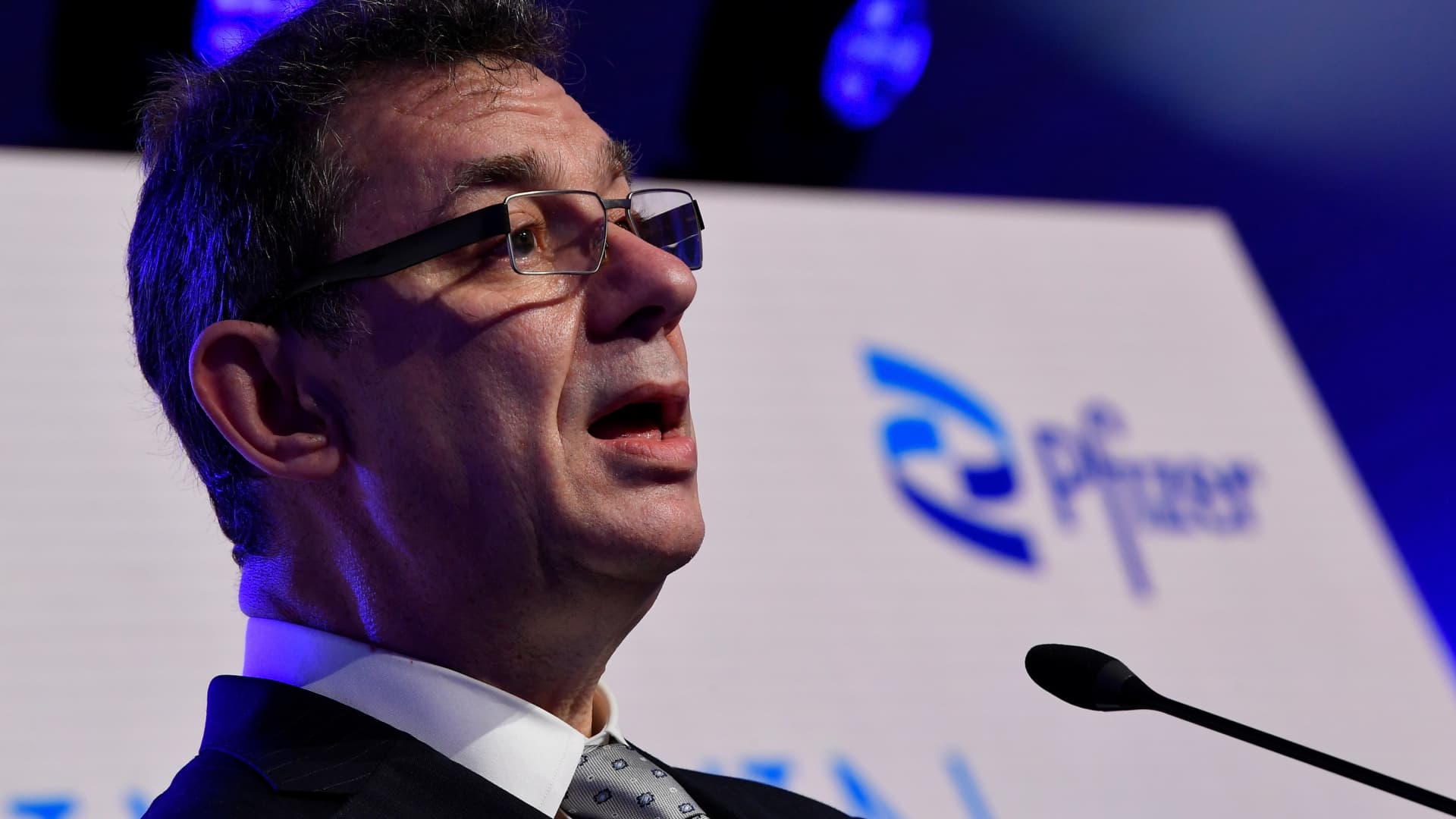Pfizer on Tuesday posted a surprise adjusted fourth-quarter profit, as the company’s declining Covid business performed better than expected.
The company reversed roughly $3.5 billion in revenue related to the expected return of 6.5 million doses of its Covid drug, Paxlovid, from the U.S. government. That hit is less than the $4.2 billion Pfizer initially expected for the return of nearly 8 million doses of Paxlovid.
Pfizer’s Covid vaccine raked in $5.36 billion in revenue for the quarter, down 53% from the same period last year. Analysts had expected the shot to bring in $4.99 billion in sales, according to FactSet estimates.
The results come as Pfizer tries to blunt the rapid decline of its Covid business, which saw demand plummet to new lows and transitioned to the commercial market in the U.S. last year. As revenue suffers, the company is trying to improve its bottom line and boost investor confidence through a broad $4 billion cost-cutting plan.
Here’s what Pfizer reported for the fourth quarter compared to what Wall Street was expecting, based on a survey of analysts by LSEG, formerly known as Refinitiv:
- Earnings per share: 10 cents per share adjusted vs. loss of 22 cents expected
- Revenue: $14.25 billion vs. $14.42 billion expected
The pharmaceutical giant also reiterated its full-year 2024 guidance, which it first outlined in mid-December.
Pfizer expects revenue to come in between $58.5 billion and $61.5 billion this year, which includes roughly $8 billion in revenue from its Covid products and contributions from its recently closed acquisition of cancer drug developer Seagen.
The company expects to book adjusted earnings of $2.05 to $2.25 per share.
Pfizer recorded fourth-quarter revenue of $14.25 billion, down 41% from the same period a year ago, due to the plunge in sales of its Covid products.
For the fourth quarter, Pfizer booked a net loss of $3.37 billion, or 60 cents per share. That compares to a net income of $4.99 billion, or 87 cents per share, during the same period a year ago.
Excluding certain items, the company’s posted earnings per share of 10 cents for the quarter.
Still, Pfizer’s Covid business had a dismal 2023.
Revenue from its Covid vaccine and Paxlovid came in at $12.5 billion in 2023. That’s down 78% from their $57 billion peak in 2022.
Pfizer’s non-Covid drugs
Excluding Covid products, Pfizer said revenue for the fourth quarter grew 8% operationally.
The company said that growth was partly fueled by its new vaccine against respiratory syncytial virus, which entered the market during the third quarter for seniors and expectant mothers. The shot, known as Abrysvo, posted $515 million in sales for the fourth quarter.
The company said revenue also got a boost from strong sales of Vyndaqel drugs, which are used to treat a certain type of cardiomyopathy, a disease of the heart muscle. Those drugs booked $961 million in sales, up 41% from the fourth quarter of 2022.
Pfizer also said its blood thinner Eliquis, which is co-marketed by Bristol Myers Squibb, helped drive that growth. The drug posted $1.61 billion in revenue for the quarter, up 9% from the same period a year ago. Analysts had expected Eliquis to rake in $1.52 billion in sales, according to FactSet.
One non-Covid product class fared worse than Pfizer hoped. A group of shots to protect against pneumococcal pneumonia brought in $1.60 billion in sales for the fourth quarter. That was down 8% from the same quarter a year ago due to lower demand and what the company called “unfavorable timing of customer orders.” Analysts had expected that group of shots to book $1.97 billion in sales, according to FactSet.
Wells Fargo analyst Mohit Bansal said the disappointing sales for that group of shots, which Pfizer calls the Prevnar family, could be a concern.
Bansal noted that Merck has offered encouraging commentary on prospects for its own pneumococcal pneumonia vaccine franchise, so he expects Pfizer to receive questions during its fourth-quarter earnings call about how it plans to defend that part of its business.
The results cap a rocky year for a company that once saw revenue soar after it delivered the world’s first Covid vaccine.
Shares of Pfizer fell roughly 40% in 2023 as demand for its shot and other Covid products plummeted worldwide, causing the company to dramatically slash its full-year revenue forecast, record multi-billion dollar charges related to inventory write-offs and launch a sweeping cost-cutting program.
What’s more, Pfizer’s future in the booming weight loss drug market began to look bleak last month. The company scrapped a twice-daily version of its experimental weight loss pill after patients with obesity taking the drug lost significant weight but had trouble tolerating the drug in a mid-stage clinical study.
Investors are waiting for the company to unveil data on a once-daily form of that drug, called danuglipron, during the first half of the year.
Pfizer hopes its $43 billion acquisition of Seagen, which officially closed during the fourth quarter, will restore investor confidence. Last month, the company made it clear that it was doubling down on cancer treatments after it revealed plans to create a new oncology division that includes Seagen in early 2024.
But Wall Street is still skeptical about whether Pfizer can turn things around: The company’s stock is already down more than 4% for the year, putting its market value at roughly $155 billion.
Pfizer will hold an earnings call with investors at 10 a.m. ET on Tuesday.
